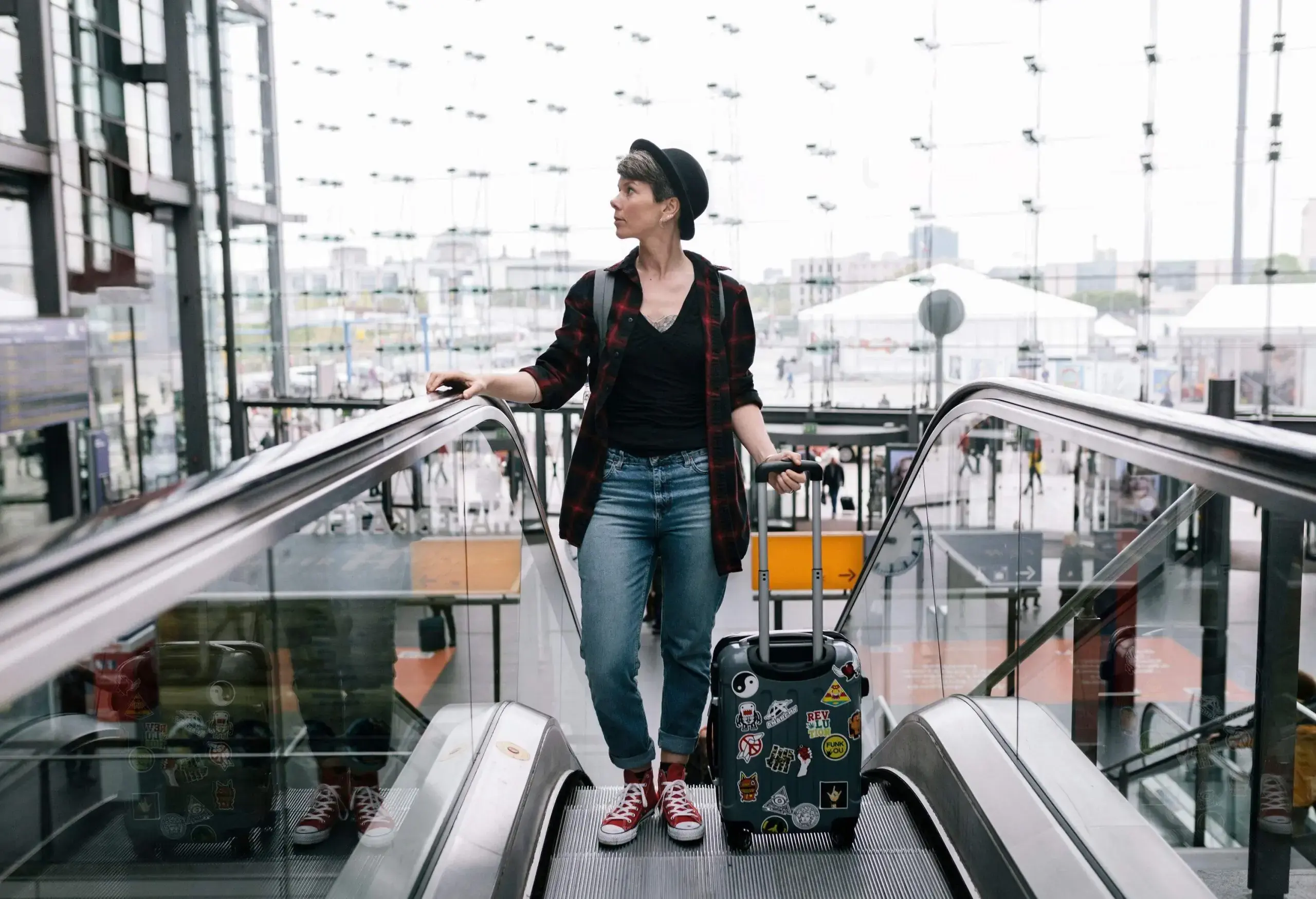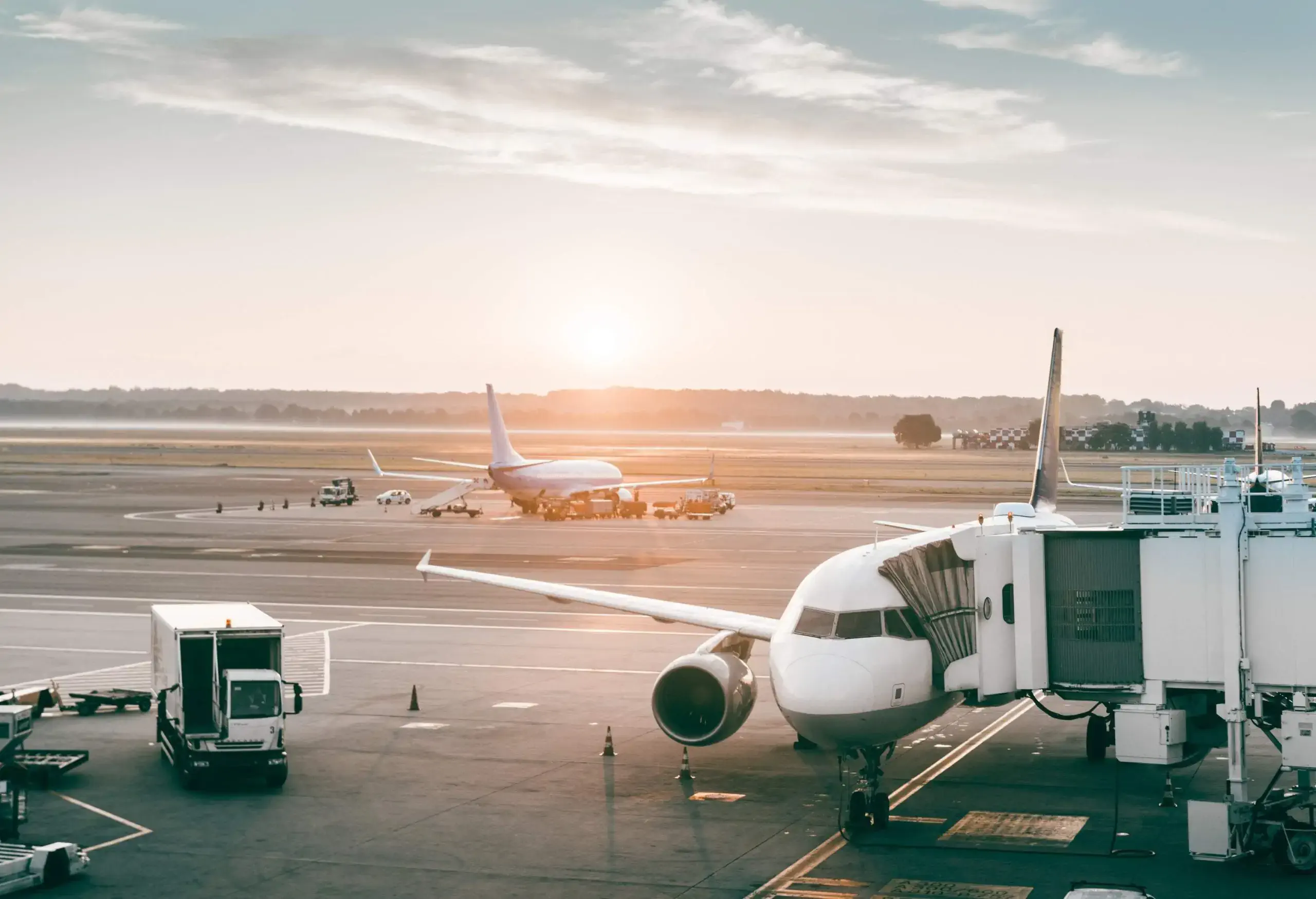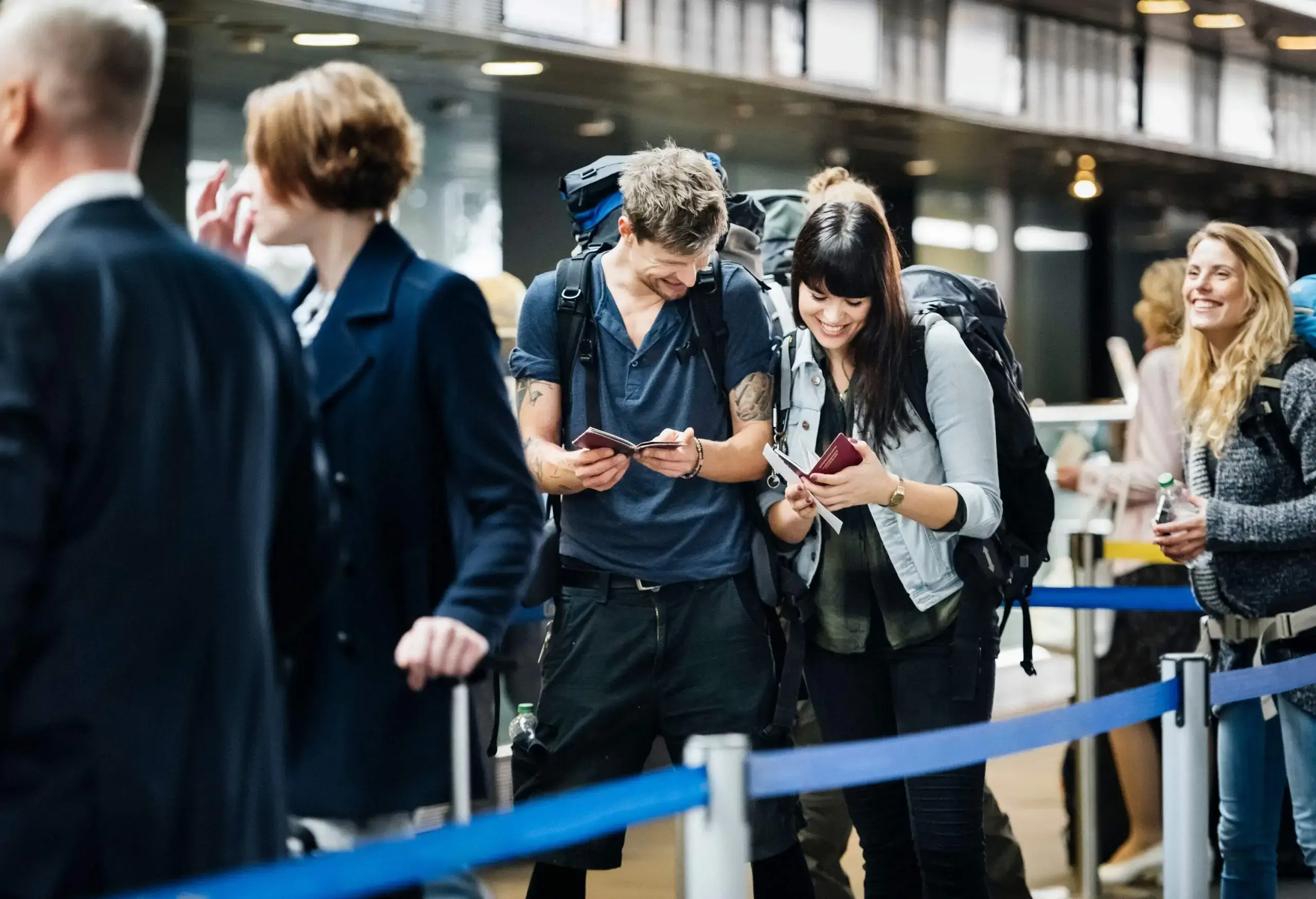Magical Milan is one of Italy’s most forward-thinking metropolises, as steeped in big business as in its long history. It’s also the gateway to some of Italy’s most glorious landscapes – from the snow-capped Dolomites to the scenic lakes of Piedmont, Lombardy and Veneto. Shipping travelers to and from its wonders are three Milan airports.
The city itself is served by two airports – Malpensa and Linate. A third, Milan Bergamo, is located in nearby Bergamo. Together, they served more than 51 million people in 2021, just beating out Rome for passenger numbers. Milan is then Italy’s busiest city for flights.
Milan Malpensa International Airport – MXP
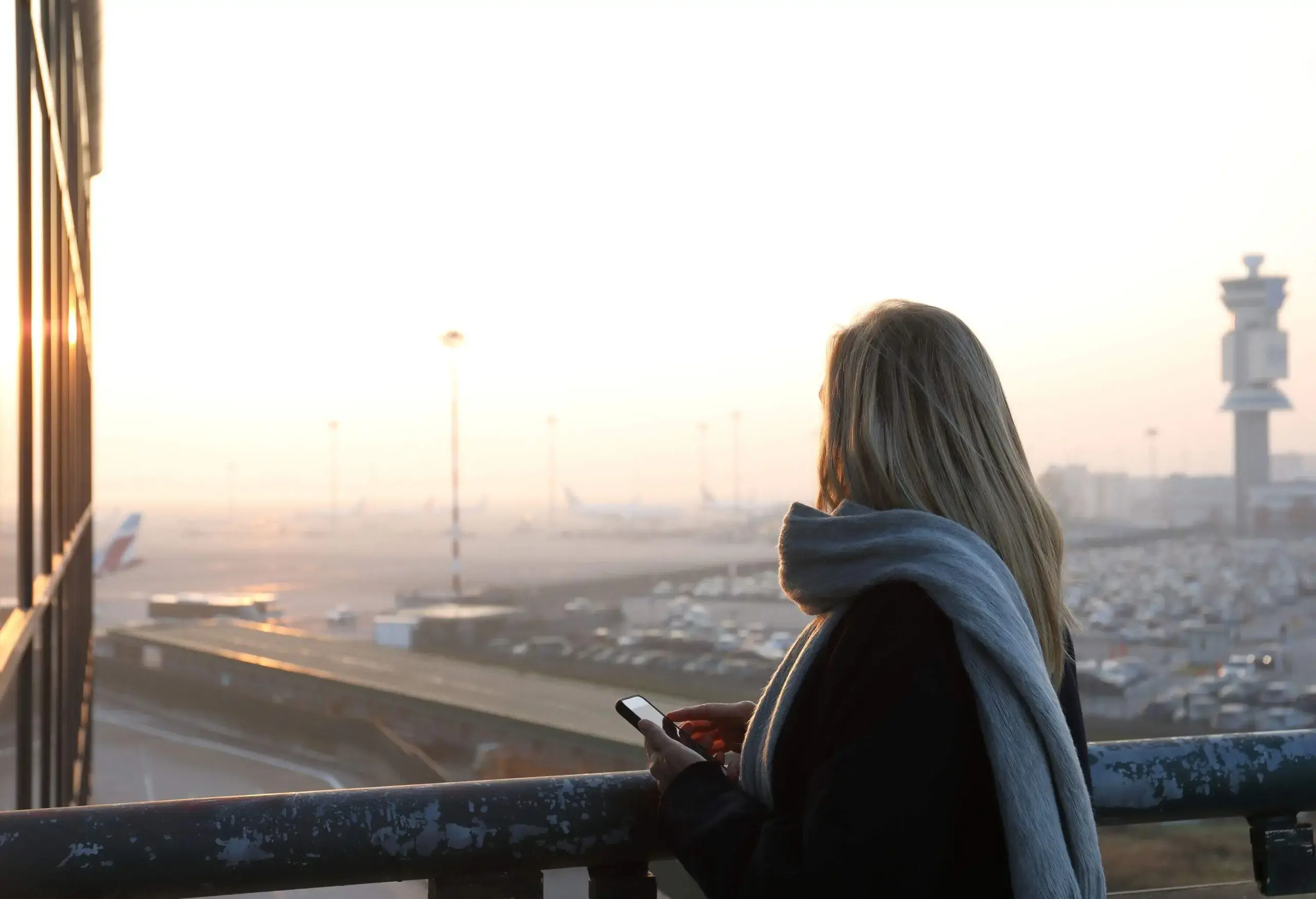
The main international airport in Milan, Malpensa International is the second busiest in Italy after Rome-Fiumicino. It’s the primary hub for long-haul flights in Italy’s north, with more than 26 million passengers passing through in 2023. Around 87% of those travelers were on international flights.
At the start of 2024, Malpensa had 134 airlines flying to and from 382 domestic and international routes across 77 countries. It’s the best airport to fly into from the US, with 14 routes connecting it to cities from coast to coast.
MXP terminals
Malpensa is a huge, sprawling transport hub. It has two terminals a 10ish-minute free journey apart by shuttle, train and bus. With waiting times, factor in half an hour travel time if you’re on a layover or making a connecting flight.
Terminal 1, on the airport’s western side is the newer of the two and the home to all its long haul international flights. In fact, it’s home to all airlines and routes except for those conducted by EasyJet, which is the sole airline operating out of Terminal 2.
MXP airlines
As with most European airports, Malpensa is dominated by low-cost carriers. EasyJet is by far the biggest, operating 58 routes out of Terminal 2. From Terminal 1, Italian operator Neos is the second largest carrier serving 36 routes. Wizz Air, Ryanair and VistaJet round out the top five. Mostly short-haul, the most popular destinations are to Barcelona and Madrid in Spain, Paris in France, and domestically within Italy.
New York’s JFK is the best served US airport, with American Airlines, Delta Air Lines, Neos, ITA (formerly Alitalia) and Emirates among the popular carriers.
MXP shopping and dining

It’s on the first floor of Terminal 1 that you’ll find Malpensa’s mind-boggling array of shops, restaurants and bars. Spread across two plazas, or piazze, their 100-plus outlets cover some 140,000 square feet combined. Both have a distinctly fashion oriented focus – perhaps unsurprising considering Milan’s status as Italy’s fashion capital.
The Piazza del Lusso is luxury heaven, modeled on Milan’s sumptuous and historic Galleria Vittorio Emanuele. It’s a who’s who of big brands – Bulgari to Burberry, Hermès to Rolex. It boasts the first airport outlet for Giorgio Armani and a swathe of fine Italian leather goods specialists like Coccinelle and Tosca Blu.
For edgier and more economic shopping, the Piazza del Pop is my pick. More focused on street fashion and lesser-known brands, it’s a great place to snag pieces from up and coming designers. You’ll also find a range of familiar restaurant and café brands from the ubiquitous Golden Arches to some with more Italian flare. I often stop for coffee at the swish Davide Oldani Café.
Once through customs, your eating and drinking options only improve at the Piazza del Gusto. It’s here you’ll find the best Italian food and wine in the airport at Ferrari Spazio Bollicine.
Terminal 2 has nowhere near the volume or quality of amenities that Terminal 1 offers. But there are more than enough big brand stores and restaurants, alongside Duty Free, to keep you sated while waiting for your flight.
MXP location

Malpensa is 26 miles northwest of Milan’s iconic Duomo and city center, as the crow flies. That translates to around 31 miles and up to an hour on the road, traffic depending. Happily, it’s well served with excellent transport options into the city, and beyond.
Unless you’re weighed down with lots of luggage (and who could blame you in Milan), the train is cheaper and faster than taking a taxi. If you have shopped till you drop, expect to pay around 110 euro (around $120) for a taxi into Milan center.
Its location also makes Malpensa super convenient for exploring Italy’s northern delights. It’s the closest airport to Lake Como and the Dolomite Mountains and although you can find buses to both, you should rent a car. Transport routes get sparser the further you get from the city. The freedom of a car will mean you can really immerse yourself in the region’s magic.
- Malpensa Express – The Malpensa Express is the most convenient connection. It links directly with Milan city center with stops at Cadorna, Centrale, Porta Garibaldi and Bovisa stations along the way. Depending on your stop, it takes between 35 and 50 minutes to get into the city center, with trains departing every 15 minutes early until late. Tickets are 13 euros ($14) each way. From Cadorna and Centrale, it’s easy to hop on connecting transport to your final destination.
- Bus – There are numerous coach companies operating routes into Milan and beyond. Connections to Central Station run every 20 minutes via four carriers: Terravision, Malpensa Bus Express (Autostradale), Malpensa Shuttle (Air Pullman) and Caronte. Typically, they cost around 10 euros ($11). You’ll also find regular buses to other major destinations like Turin, Genoa and of course, those magical Italian lakes.
Milan Linate Airport – LIN
Milan Linate is the closest airport to Milan city center. Its central location makes it far smaller than its sibling airports, restricted as it is by the city around it. That means limited daily flights in and out, and only to destinations domestic and within Europe. Despite that, in 2023 just shy of 10 million passengers passed through its single terminal.
While it serves 50 airlines operating 149 routes to 35 countries, it’s short haul only with almost a third of destinations domestic. Its Rome-Milan route in particular is hugely popular with business flyers appreciative of the quick transfer time into the city.
As is always the way, smaller airports come with benefits and pitfalls. Small means easy to get around and you don’t need to arrive hours before departure. But it also means fewer amenities and often denser crowds. If it’s a quick in-and-out Milan city break you’re after, I think its sheer convenience outweighs any downsides.
LIN terminal

One terminal serves all Linate flights, domestic and international. The airport has been undergoing a slow redevelopment over recent years, updating facilities and amenities. More recently however, some of the high profile openings including the Michelin-listed Michelangelo restaurant have closed. Now Linate is awash with endless cafés serving admittedly great coffee, but no table-service restaurants to really recommend.
The pastries at Rinaldini are worth stopping off for, as is the Brazilian take on sushi you’ll find at Temakinho. For pre-flight drinks, bubbles and sophistication flow freely at Ferrari Spazio Bollicine. Shopping pales in comparison to Malpensa’s vast plazas but you’ll still find Italian fashion staples intent on parting you from any last euros.
LIN airlines
Limited routes and restricted schedules confine Linate’s carriers mostly to the budget airline category. VistaJet currently runs 38 routes around Europe including Frankfurt, the best served international destination. ITA Airways dominates though. It may serve fewer routes than VistaJet, but it flies to and from the majority of the 20 most popular destinations, particularly within Italy.
LIN location

Just over four miles from Duomo di Milano as the crow flies, landing in Linate is to land in the heart of Milan. A taxi to the central station will take around 20 minutes, depending on when you’re commuting, with no fixed charge. Be sure to agree a price before you get in but expect to pay around 50 euros ($54). Or save yourself some spending money and take a bus or, even better, the subway:
M4 Metro line – Opened in July 2023, the new Metro M4 Blue line has revolutionized the Linate commute. It connects the airport to the San Babila metro station a stone’s throw from the Duomo in just 12 minutes. A two-euro ticket lasts 90 minutes, covers buses, trams, trolleybuses, suburban railway lines and the rest of the metro for your onward commute. A game changer.
Bus and shuttle – Almost moot in comparison to the new Metro, bus and shuttle services have long plied the route into the city. Each takes around 25 minutes, the bus costing around $2 and the shuttle $5. I wouldn’t be surprised to see both disappear soon as the Metro line takes over.
Orio Al Serio Airport – BGY
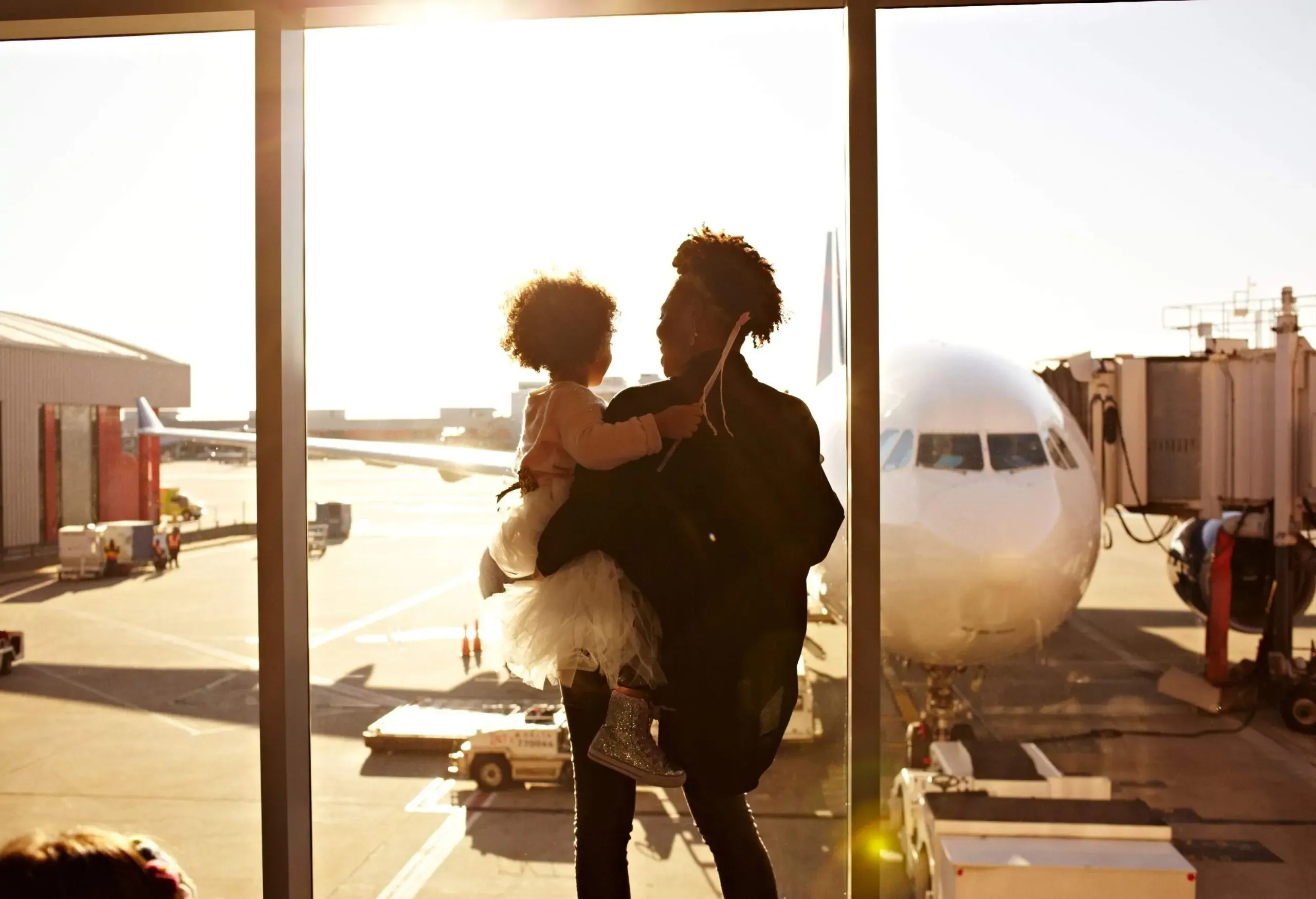
At first glance, BGY doesn’t seem like a suitable airport code for Milan when that airport is called Orio Al Serio. That’s because Oria Al Serio isn’t in Milan. It’s actually 30 miles northeast in the nearby city of Bergamo, which is where that BGY identifier comes from. Confusingly, it’s also known as Il Caravaggio International Airport, but we’ll just call it Milan-Bergamo, as most non-Italians do.
Milan-Bergamo sits between Malpensa and Linate airports both in scale and passenger numbers. In recent years it’s become a hub for low-cost airlines that have seen its popularity soar. Around 16 million fliers passed through in 2023 on 48 airlines operating 227 routes across 41 countries.
That makes it Italy’s third biggest airport in terms of passenger numbers. Many of them weren’t destined for Milan but rather the Trentino Dolomites, Alps and lakes regions. It’s the most convenient airport for reaching Lake Garda in particular.
BGY terminal
Despite its size, Milan-Bergamo has only one terminal. While that’s convenient for getting around, the airport’s stratospheric growth means it can get nightmarishly busy. Despite some upgrades, facilities haven’t kept up with demand. Long queues and short tempers are a common occurrence.
There’s a scattering of serviceable restaurants and shops, but few of the big names that proliferate Milan’s other airports.
BGY airlines

Its flight schedule is dominated by low-cost carriers flying domestically and short haul within Europe and north Africa. Of these, Ryanair is by far the biggest, covering 90 routes. Milan-Bergamo has become the Irish giant’s third largest hub after Dublin-Cork and London-Stansted airports.
Malta Air is the second biggest operator, followed by budget stalwarts Wizz Air and VistaJet. Although the majority of destinations are the usual European and Italian haunts, the most popular destination is Tirana, the capital of Albania.
BGY location
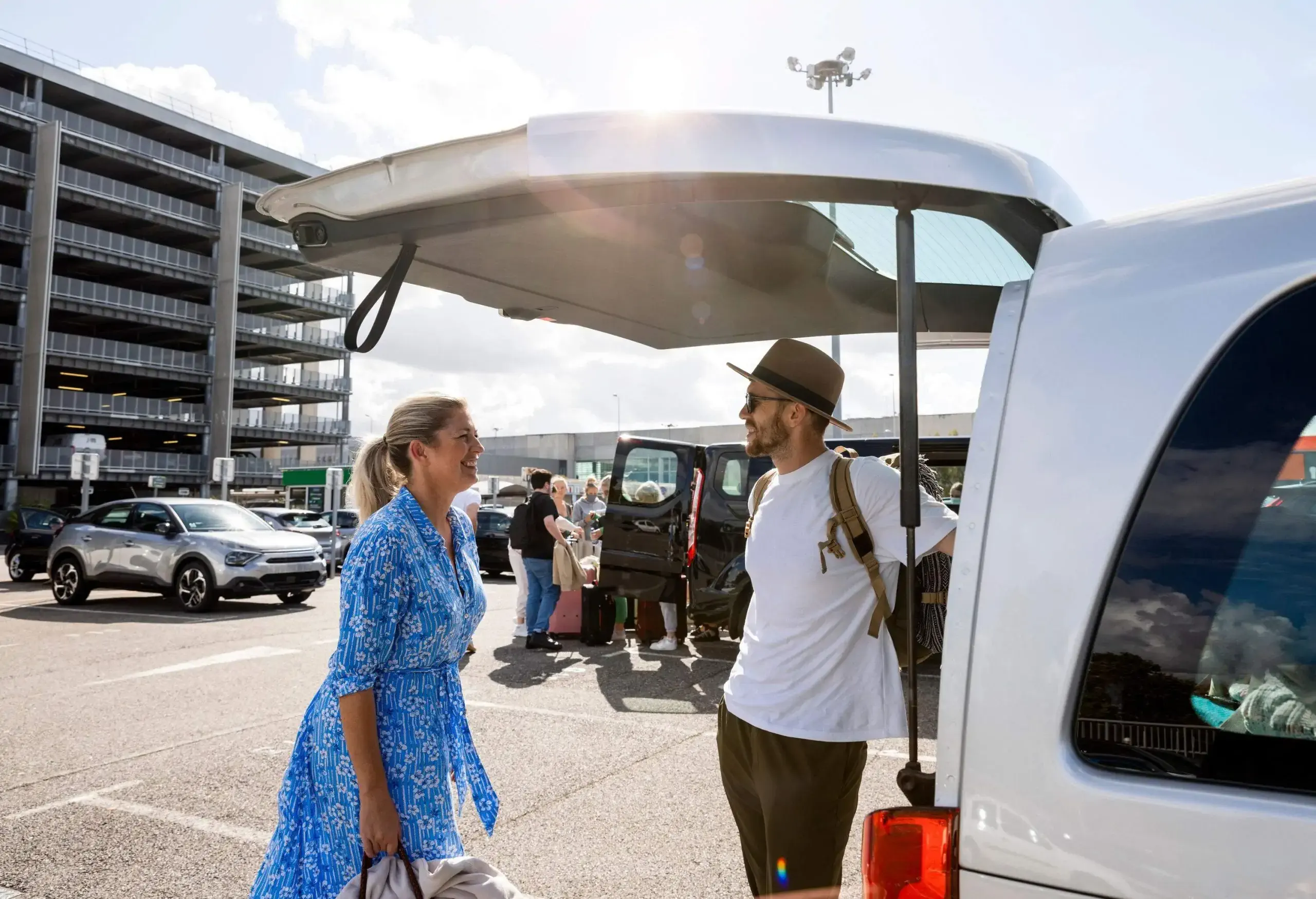
Milan-Bergamo’s location is the ace up its sleeve, but only if you’re heading somewhere other than Milan. I’ve only ever used it as an access point for ski trips to the Italian Alps and Dolomites. While buses do operate routes into these areas, it’s much better to rent a car.
Despite its inclusion as a Milan airport, it’s the least convenient of the three to get into the city. Twenty-eight miles to Duomo di Milano as the crow flies, that translates to an hour long, $100-plus taxi ride. A taxi into Bergamo city center takes around 15 minutes and costs about $25. Beware though, taxi queues can get insanely long!
While there are buses into Milan, there’s no direct train or subway:
- Bus – Numerous bus companies ferry passengers to locations in Bergamo, central Milan and beyond. Transfer times into Milan are over an hour with tickets typically costing around 10 euros ($11) each way.
- Fly Ski Shuttle – If you don’t want to rent a car, the Fly Ski Shuttle is the best way to reach the ski areas of the Dolomites.
MXP vs. LIN airports
Milan’s two airports proper – Malpensa MXP and Linate LIN – are entirely different beasts. Each serves different needs and travelers, from long-haul holiday makers to day-tripping business commuters.
Malpensa is an international transport hub, one of Europe’s most prominent airports serving routes across the world. It’s enormous – a destination in its own right with shops, restaurants and facilities to keep passengers entertained for hours.
Linate is the less grandiose but in many ways more practical option. Far closer and more convenient for the city, it’s tiny compared to Malpensa but also far less fussy. Its routes are limited to domestic destinations and short haul in Europe.
What’s the best Milan airport to fly into?
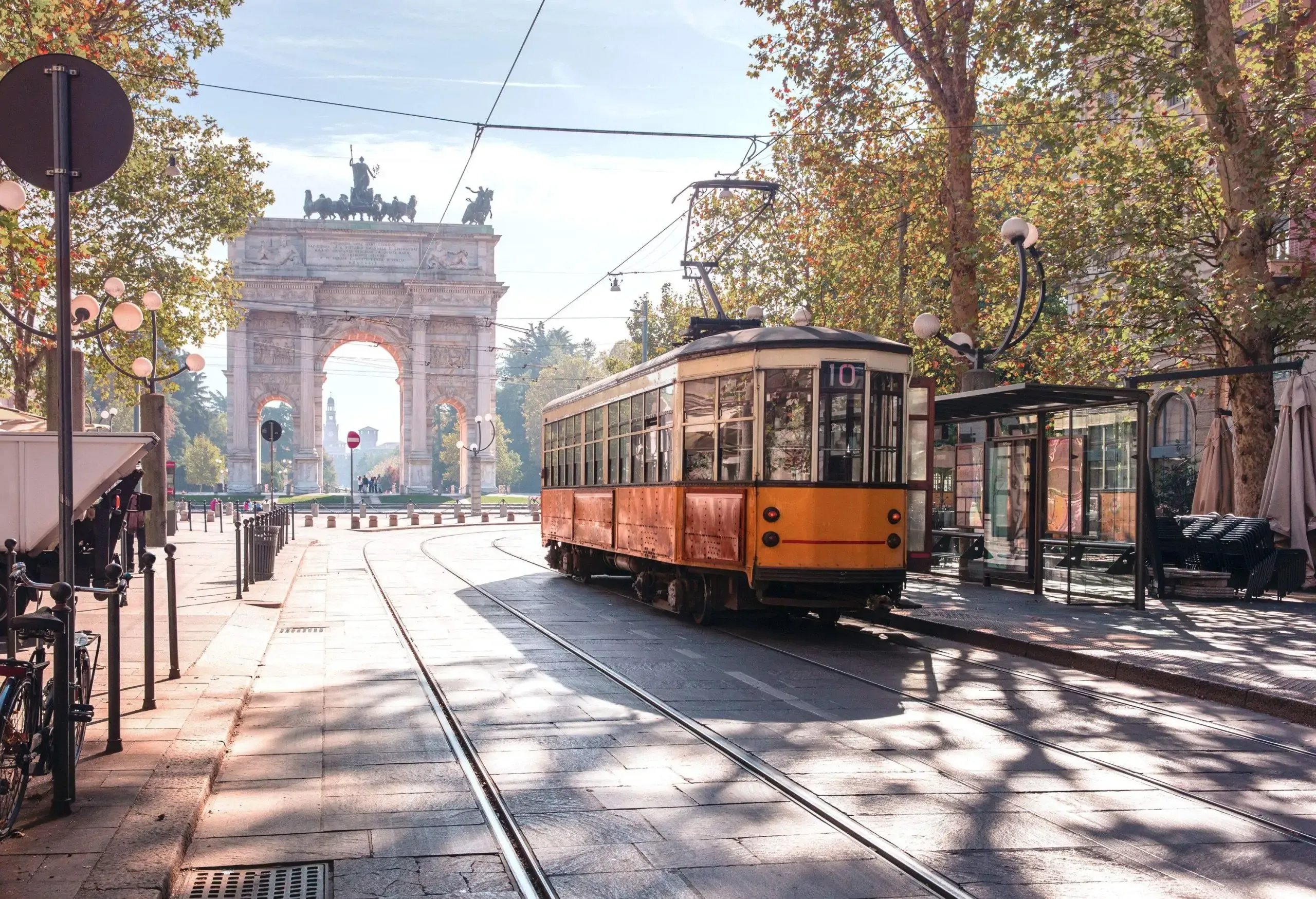
Three airports give travelers through Milan plenty of choice. Each has its merits, depending on where you’re coming from and going on to.
If you’re flying to and from the US, you have only one option – Malpensa Airport. If you’re visiting Milan from within Europe or using it as a launch point to other European destinations, Linate is your best bet. For cheap flights and convenient access to Italy’s north, Bergamo is popular. But for me, Malpensa is worth paying a little more for, as the experience is so, so much better.
Conclusion
It may be surprising that Milan has overtaken Rome for passenger numbers and traffic. But take into account its location as a doorway to the wonders of northern Italy and it makes sense. Malpensa is a world-class travel center with great facilities and shops that would make many city centers squirm in envy. Alongside its two smaller airports catering to travelers of every type, from business to budget, Milan is one of Europe’s best connected cities.
If you’re traveling beyond Milan, you’ll find guides to Rome and other airports in the KAYAK Airport guide.
How was this guide created?
The Dolomites have become my favorite ski area in Europe. Over the last few years, I’ve used Milan’s airports as my access point. They’re cheap, versatile and usually offer cheap car rental. Some are undoubtedly better than others, though! This guide lays out which will suit the kind of trip you want to take, with a few tips on how to get the best out of each.
Disclaimer: Prices and information are correct as of 02.23.2024 and may vary with time.



